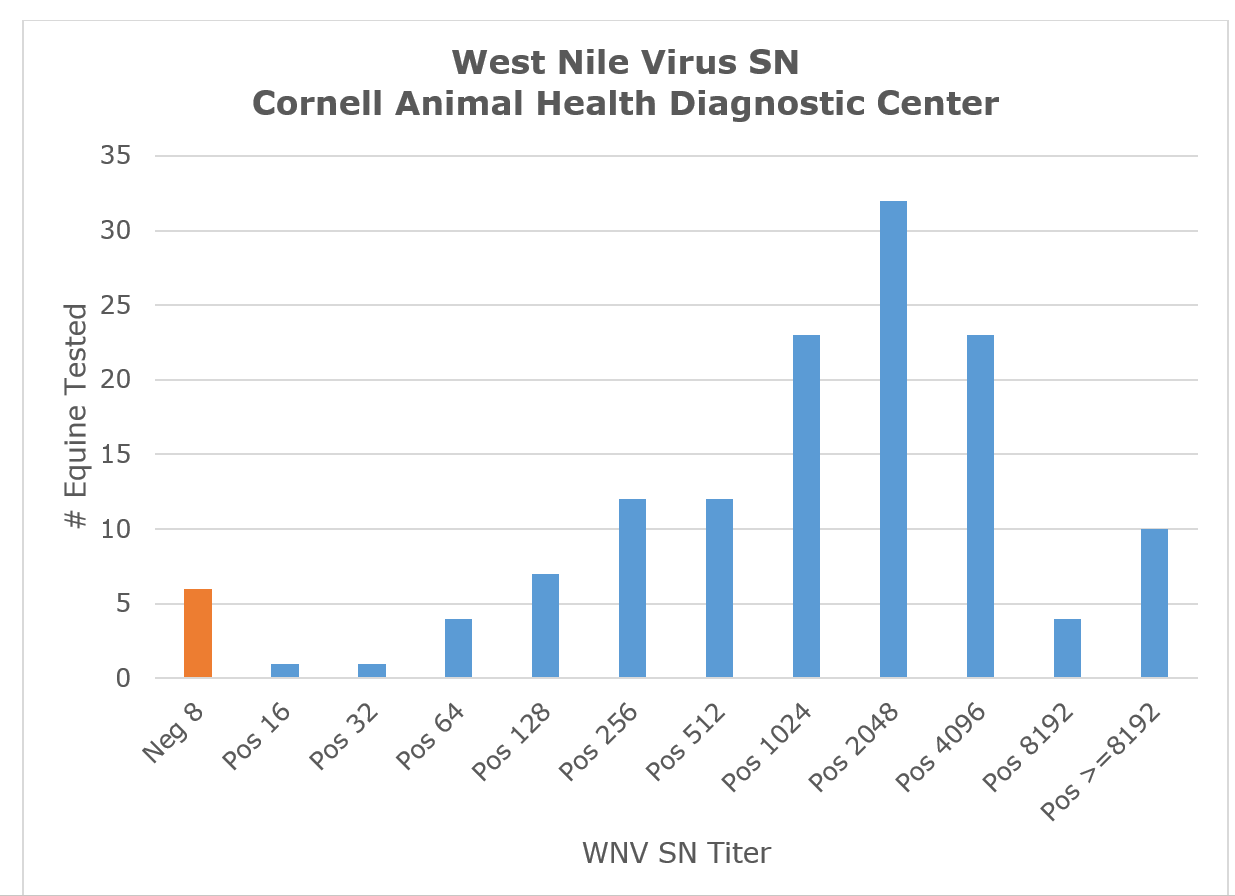West Nile Virus Serum Neutralization
West Nile virus (WNV) is in the family Flaviviridae, genus Flavivirus. Other members in the Flavivirus genus include Japanese encephalitis virus (JEV), yellow fever virus (YFV), Powassan virus (PWV), St Louis encephalitis virus (SLEV), Dengue virus (DEV) and Zika virus (ZIKV). Many of the viruses in this genus are zoonotic, but spread predominantly by insect vectors as is the case for West Nile virus. West Nile virus first appeared in the US in 1999 and the virus was identified as lineage 1 that had been circulating in Eastern Europe. A lineage 2 virus had been restricted to Africa but has now been detected in Europe.
West Nile virus amplification and reservoir maintenance occurs through an insect (mosquito) - bird cycle with mammals serving as dead end hosts, i.e. replication of the virus is not sufficient to infect a feeding mosquito for continuation of the cycle (or to infect contact animals). Some species of birds are highly susceptible to the infection (e.g. corvids and raptors) while others may be key players in maintaining the reservoir of the virus, e.g. robins. Over 300 species of birds have been reported to be susceptible to WNV.
West Nile virus infection of mammals is predominantly subclinical. With the initial epizootic in the US, it was estimated that only 1 in 12 horses showed clinical signs, but of those, there was a 40% mortality rate. There is some anecdotal evidence to suggest that for animals showing neurological signs and recover from acute disease, there may be permanent neurological deficits. Numerous animals have been reported to have become infected with WNW including humans, horses, dogs, cats, white-tailed deer, New World camelids, sheep and alligators. The most effective way to prevent clinical disease is to vaccinate animals at risk.
Serological testing for Flavivirus exposure can be challenging as there is cross-reactivity among the numerous agents in the genus as exemplified by the Zika virus outbreak in South and Central America. Serological confirmation of Zika virus infections was confounded by the co-circulation of cross-reacting Dengue virus. In North America, the only minor concern currently is with cross reactions to St Louis encephalitis virus. If SLE is suspected, two neutralization assays are needed to assess SLE exposure.
The chart below represents nearly 150 serum neutralization assays for WNV in equines. The majority of the submissions were for immune status determination in the context of a vaccination decision. The interpretation of the serology results must take into consideration the vaccination history of the animal as high SN titers (>Pos 2048) have been documented several weeks after the 2nd dose of a vaccine. Vaccine titers do not remain this elevated for an extended period.



